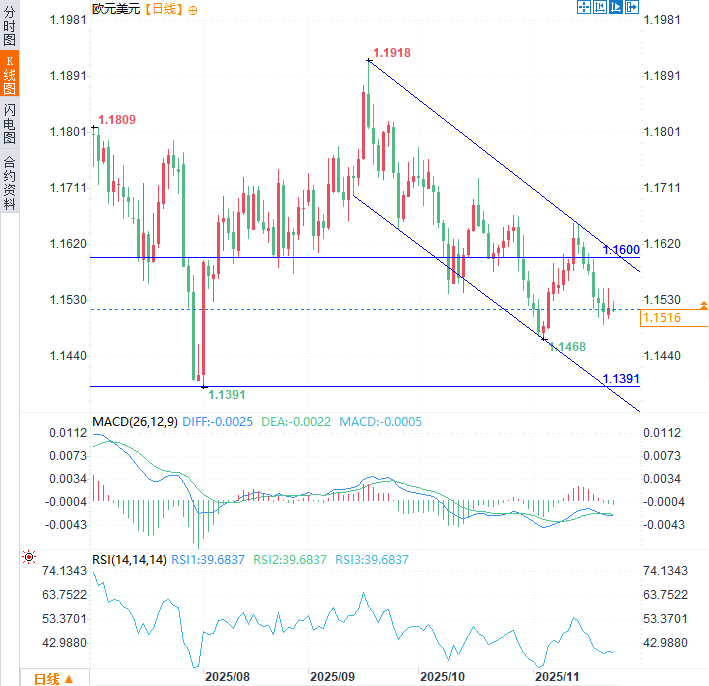Danger signal! The euro's bullish momentum is weakening, and further downside pressure is possible.
2025-11-25 15:07:04
Given the significant downside risks still present for overvalued US tech stocks, the market remains cautious about risk appetite this week. Therefore, even with a long-term bearish view on the US dollar, the market maintains a neutral-to-bearish outlook for the euro against the dollar.

Can the dollar's rebound continue?
While this week's trading schedule is somewhat light due to the US Thanksgiving holiday on Thursday, several key data points are still worth watching. If the September retail sales data released Tuesday night is as strong as expected (overall monthly rate +0.4%, core monthly rate +0.3%), the market may have more reasons to push up the dollar.
The Federal Reserve's Beige Book, to be released on Wednesday, is also worth close attention. This report compiles economic activity data from all 12 districts across the US. If it shows that the slowdown in employment is spreading, it could strengthen investors' expectations for a December rate cut—in fact, New York Fed President Williams stated last Friday that he supports another rate cut in December, pushing the market's pricing of a rate cut probability back up to 80%.
The US dollar index fluctuated around 100.15 on Tuesday, remaining firmly above the 100 mark.
German Economy Under Continued Pressure – IFO Status Quo
Germany's November IFO index, released on Monday, showed that the German economy remained on a downward trajectory towards the end of the year. The current index is 88.1, a further decline from the previous reading of 88.4, indicating that optimism among German businesses is waning.
Despite a brief period of optimism following the German government’s unprecedented infrastructure and defense stimulus package at the beginning of the year, several unpopular budget decisions by the new government have continued to escalate political tensions, causing market sentiment to turn bearish again.
Key data outlook for the euro/dollar exchange rate this week
A flurry of data releases from Europe and the US: Germany and the US will release a series of important data this week, making the euro's exchange rate against the US dollar a key market focus.
Later Tuesday evening, the US will release a series of data, including retail sales, PPI, pending home sales, the Richmond Manufacturing Index, and the Conference Board Consumer Confidence Index. Wednesday will see a flurry of data releases, including initial jobless claims, durable goods orders, and the Chicago PMI. Thursday is a US holiday and markets will be closed. Friday's trading hours are shortened and irregular.
Technical Analysis and Key Level Judgment
From a technical perspective, the outlook for the euro against the US dollar has turned bearish. The exchange rate has been trading steadily within a three-month-long downtrend channel, failing to generate any significant upward momentum. This weakness suggests that bulls may have misjudged the situation, and the anticipated rally has consistently failed to materialize.

(Euro/USD daily chart, source: FX678)
The euro is currently trading above the key support level of 1.1500 against the dollar. A clear break below this level would open up further downside potential. The next key support lies at the August low of 1.1391, with deeper support in the 1.1214-1.1275 range, formed by previous highs. These support levels will face a severe test if bearish momentum continues to strengthen.
On the upside, the 1.1600 level has become a key resistance level for the currency pair's rebound.
Aside from technical factors, global risk sentiment will continue to dominate exchange rate movements. If the stock market experiences a correction, the euro, which is highly correlated with risk assets, may face greater downward pressure against the US dollar.
At 15:05 Beijing time, the euro was trading at 1.1522/23 against the US dollar.
- Risk Warning and Disclaimer
- The market involves risk, and trading may not be suitable for all investors. This article is for reference only and does not constitute personal investment advice, nor does it take into account certain users’ specific investment objectives, financial situation, or other needs. Any investment decisions made based on this information are at your own risk.





















